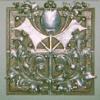
Note: While authors are asked to place warnings on their stories for some moderated content, everyone has different thresholds, and it is your responsibility as a reader to avoid stories or stop reading if something bothers you.
REDBURN From Man to Boy – His First Voyage – A Filmscript - 6. Redburn Text Notes
.
Redburn Text Endnotes
[1] Hudson River ferries: the “St. John,” 1840s:
The “Francis Skiddy,” 1859:
https://i.pinimg.com/736x/36/44/1d/36441dd5d5a6398eef3cc81e0c31f63a.jpg
[2] Redburn’s red shooting jacket: is the same in detail to this example, except Redburn’s has horn buttons and is square in the front (i.e., not a ‘cut-away’ example as in the pictures):
https://www.nma.gov.au/__data/assets/image/0011/654725/MA46105548-Hunting-coat.jpg
https://www.nma.gov.au/__data/assets/image/0009/734724/MA46106401-Hunting-coat.jpg
[3] The Battery and environs of lower Manhattan, 1830s:
https://h7.alamy.com/comp/3/1f944dc5cf95411d84e548a546f92d4a/2ba445p.jpg
https://media.wnyc.org/i/800/552/l/80/2020/05/800px-Park_Row_and_Park_Theatre.jpg
Hustlers of the Bowery, 1830s:
https://www.boweryboyshistory.com/wp-content/uploads/2008/06/boweryhydrant.jpg
[4] The Highlander of New York: When Melville wrote “Redburn” there had never been a ship registered in New York under the name Highlander. The book became one of his best sellers, and the keel of the Highlander illustrated below was laid in the Brooklyn Shipyards within a matter of months after the 1849 release of Redburn. It is more than probable this vessel was named in tribute to the fictional Highlander. As per Melville, her figurehead was named Donald, and outfitted remarkably like the author's description. A very similar figurehead from another vessel survives; see the next illustration.
“The Highlander of New York” by Louis Roux:
https://imgc.artprintimages.com/img/print/highlander-of-new-york_u-l-e81yy0.jpg?h=900&p=0&w=900
Figurehead of the 1855 Donald McKay:
https://newenglandnomad2015.files.wordpress.com/2017/09/img_01761.jpg?w=490
[5] Cased fowling piece: English examples from about 1805:
https://images.bidsquare.com/item/l/9518/95183.jpeg?t=1ENuki
[6] Nug: rough term of endearment from man to boy (like ‘kiddo,’ ‘bugger’ or ‘sport’).
[7] Arrival in England: “Port of Liverpool” by Samuel Walters, 1836:
https://www.shipspottersteve.com/uploads/1/6/9/2/16921916/wp-20150502-14-58-48-pro-2_orig.jpg
[8] Dutchie’s ‘Baltimore Clipper’ dance music: Bach’s Gigue in G, BWV 577:
https://www.youtube.com/watch?v=KsYwi8FP2E4
[9] The Exchange: Liverpool’s cruising grounds:
http://streetsofliverpool.co.uk/wp-content/uploads/Exchange-2.jpg
[10] American Teen sporting Harry and Redburn’s ‘London’ look, early 1840s (author’s collection):
https://i.pinimg.com/564x/25/05/76/2505766c33f7779ccf4343bdf5ad136a.jpg
Harry and Redburn’s silk plaid vest: 1840s example:
https://1tq45j21k9qr27g1703pgsja-wpengine.netdna-ssl.com/wp-content/uploads/2020/03/ma-29932.jpg
[11] Fancy boy: hustler; young male sex worker.
[12] Toffer: a superior sexual service provider.
[13] Indorser: a passionate lover. Festival night: sex-worker’s hours of operation. A wedding night: a romantic sexual date.
[14] An 1834 railway carriage:
https://blog.railwaymuseum.org.uk/wp-content/uploads/2013/11/bodmin-carriage.jpg?w=507
[15] Flavor of “The Club”: London’s ‘Reform Club’ in 1841:
[16] The Telamones supports in ‘The Club’: Leo von Klenze’s examples for the Hermitage in St. Petersburg:
‘The Club’s’ sofas, based on Kedleston Hall examples:
Overall view:
https://media-cdn.tripadvisor.com/media/photo-s/19/d9/20/2c/the-kedleston-drawing.jpg
http://images.ntpl.org.uk/hppa-zooms/00000000658/cms_108607_1.bro
End support:
http://images.ntpl.org.uk/hppa-zooms/00000000658/cms_108608_1_2_.bro
[17] The Stairway Paintings “Hercules and Telephus”:
https://upload.wikimedia.org/wikipedia/commons/3/3d/Hercules-and-telephus.jpg
“Chiron and Achilles”:
[18] Three shades of snuff for reference:
https://ramsay.arthistory.wisc.edu/static/Snuff.jpg
[19] Monkey jacket:
[20] Husband: a regular client who favors a particular hustler over all others, and who may make the arrangement semi-permanent and exclusive; analogous to situations where men provide housing and income to a beloved mistress. This term, along with all the others in this series, comes from Grose’s Classical Dictionary of the Vulgar Tongue, London 1823 – a slang guide full of Gay terms. An unabridged facsimile is available here:
[21] The Hustler’s neck scarf: Melville relays in graphic tones that the young man’s neckwear is soiled – with what, he does not explicitly say – but he adds suggestively that it: “looked as if it were going to seed.” (Chapter 4)
_
Note: While authors are asked to place warnings on their stories for some moderated content, everyone has different thresholds, and it is your responsibility as a reader to avoid stories or stop reading if something bothers you.
Recommended Comments
Chapter Comments
-
Newsletter
Sign UpSign Up and get an occasional Newsletter. Fill out your profile with favorite genres and say yes to genre news to get the monthly update for your favorite genres.

